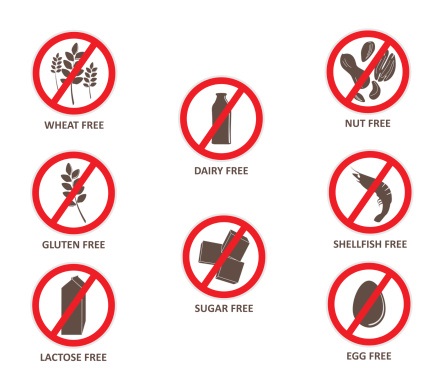6 dining tips for those with food allergies

If you suffer from food allergies, you pay close attention to meal preparation at home, making sure that you don’t use anything that will cause an allergic reaction. But what about when you go out to eat and you can’t see a list of ingredients or preparation?
Dr. Newton Li, an allergy/immunology physician for Advocate Dreyer Medical Clinic, has six tips for food allergy sufferers while eating out:
- Reactions often occur from food allergens in “hidden” ingredients and in desserts.
- For example some hot dogs contain milk and Worcestershire Sauce may contain anchovies (fish). Also, accidental allergic reactions are often caused by desserts. So proceed with caution when ordering these sweet treats.
- Use caution at buffets and bakeries as well as Asian and Mexican restaurants.
- Buffets provide an additional risk due to the lack of labeling of ingredients, proximity of foods to each other and interchanging of serving utensils between food receptacles. The same risk of cross-contamination due to shared equipment or utensils also occurs in ice cream shops and bakery displays.
- Peanut/tree nuts are common in Asian and Mexican dishes so even if you order a food without these ingredients there is a risk of cross-contamination with these foods during cooking or meal preparation.
- Order simply prepared foods.
- Consider ordering foods that are prepared with a single ingredient such as broiled meat entrees or steamed vegetables which can potentially decrease the risk of ingesting a hidden allergenic ingredient. Avoid sauces, desserts, foods prepared in a pastry covering such as pot pies, stews, and fried foods. It is common in the food industry to cook several foods in the same fryer, which increases the risk of cross-contamination.
- Be proactive and do not assume food is prepared safely.
- Servers and restaurant managers often are not always educated about food allergies. They are not always aware of food safeties and requirements for removing allergens. So it is important to ask detailed questions about ingredients and ask for advice on selecting menu items. If the staff appears unsure, it may be best to dine elsewhere.
- Consider carrying a personalized “chef card.”
- Create a “chef card” that displays specific food allergies, the severity of their reaction, and key ingredients that must be avoided. This card, which can be the size of a business card and laminated, should be presented to the restaurant manager and/or chef to review before the meal is ordered.
- Most importantly, bring your Epinephrine AutoInjector device (EpiPen) when dining out.
While preparing a meal at home guarantees that you avoid exposure to foods you are allergic to, with a little bit of caution dining out can be an enjoyable experience as well.
Related Posts
Comments
One Comment
About the Author
health enews staff is a group of experienced writers from our Advocate Health Care and Aurora Health Care sites, which also includes freelance or intern writers.


















Something to watch out for !!!!